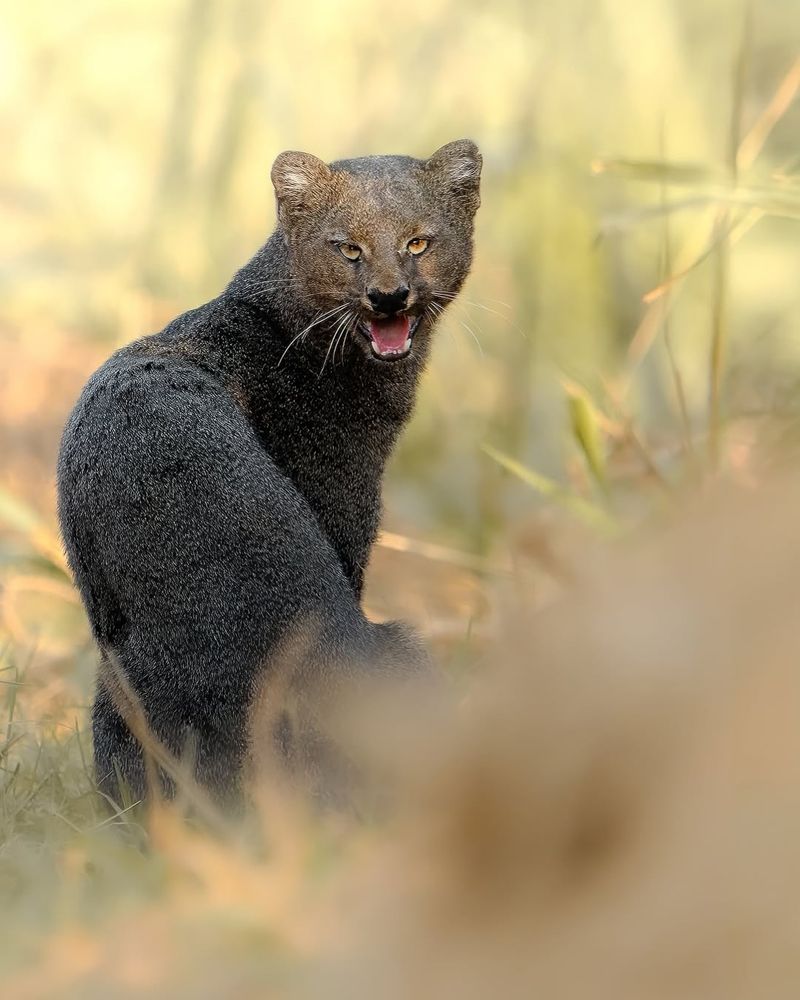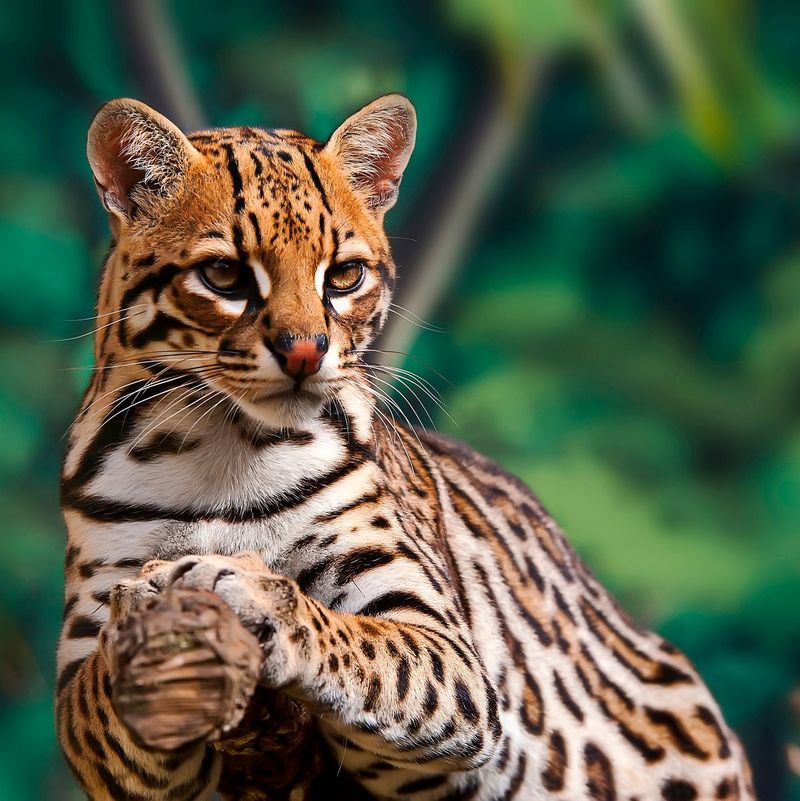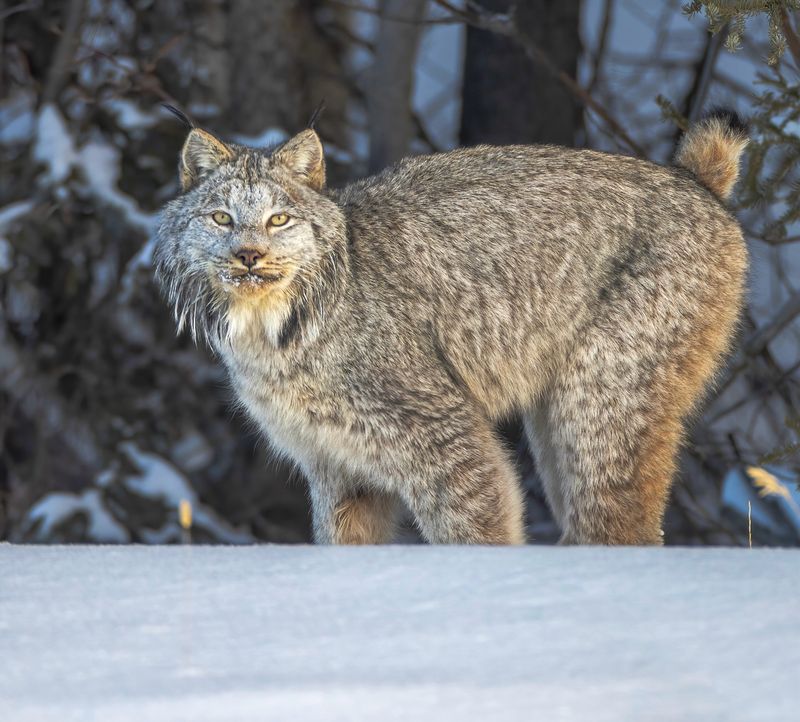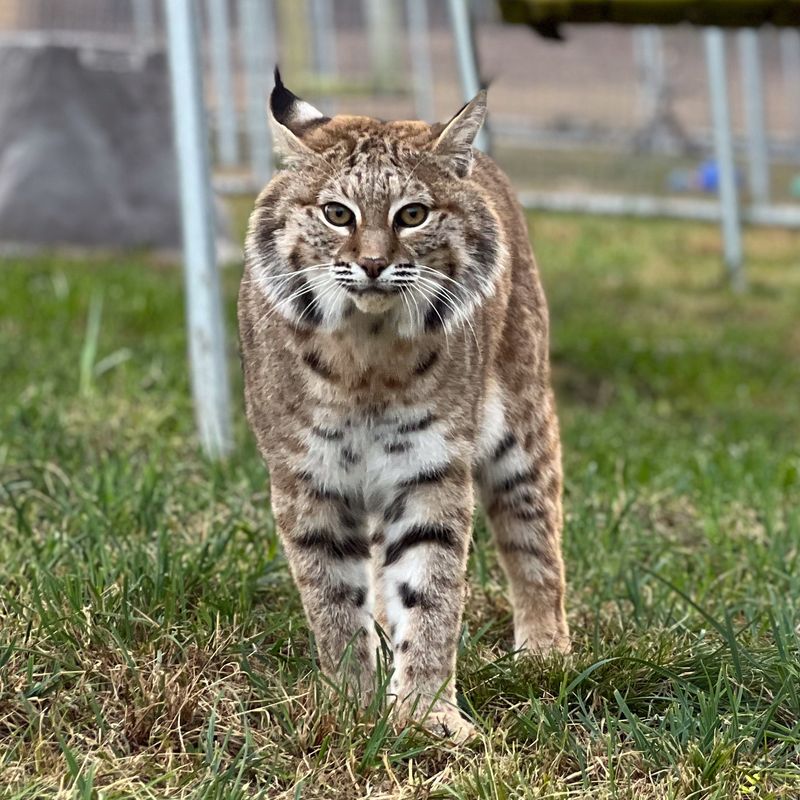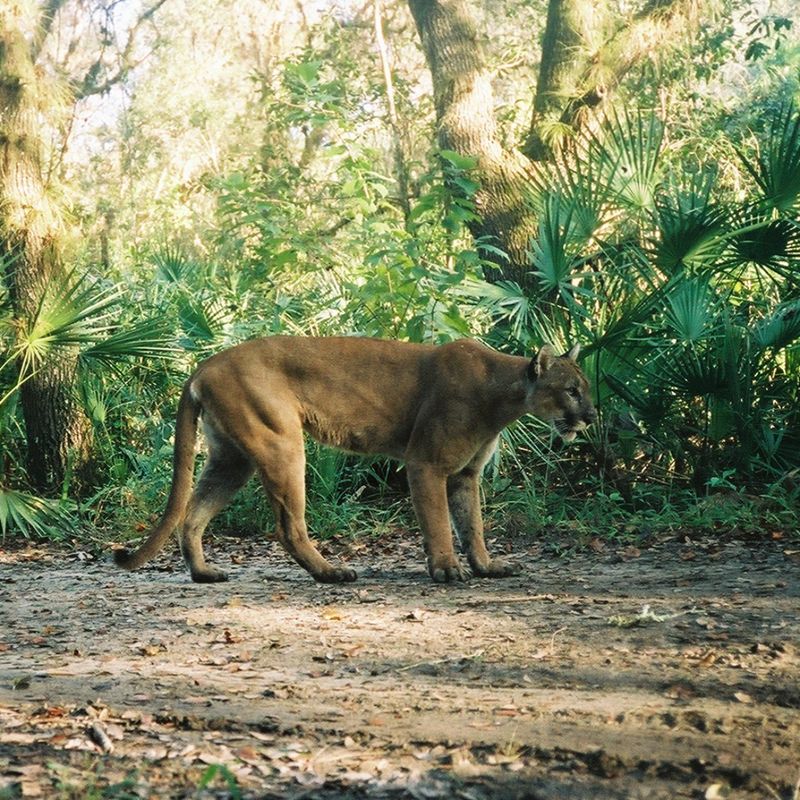📖 Table of Content:
When it comes to wild cats in North America, most people can name two: the stealthy bobcat and the mighty mountain lion. But hidden in the shadows of deserts, swamps, and treetops are other elusive predators—rarely seen, often misunderstood, and criminally underrated.
These secretive felines don’t roar for attention. They slink through the underbrush, leap silently through the canopy, and ghost across snowy trails, playing vital roles in keeping ecosystems in check. Yet their stories rarely make the headlines.
From tree-dwelling acrobats to whisper-quiet swamp hunters, North America’s lesser-known wild cats are more than just mysterious—they’re extraordinary.
Let’s step off the beaten path and meet six of the continent’s most fascinating feline residents that prove there’s far more to America’s wilderness than you ever imagined.
1. Jaguarundi: The Weasel Cat
Stretching like a sleek otter with the face of a mini-puma, the jaguarundi defies typical cat appearances. Unlike most felines, these unusual cats are active during daylight hours, slinking through dense brush in search of prey.
Their coloration ranges from deep chestnut to smoky gray, providing perfect camouflage in the scrublands of Texas and Arizona. Many people mistake them for otters or weasels when glimpsed briefly.
Jaguarundis communicate through 13 different vocalizations – more than almost any other wild cat. These sounds include purrs, whistles, and even bird-like chirps that help them coordinate during rare social interactions.
2. Margay: The Acrobat of the Trees
Dangling from branches with its tail, the margay performs gravity-defying stunts that would make circus performers jealous. These spotted forest acrobats possess unique ankle joints that rotate 180 degrees, allowing them to run headfirst down tree trunks and hang by a single paw.
Found in the southernmost tip of Texas, margays rarely touch the ground, conducting their entire lives in the leafy canopy. Their oversized eyes gather available light, making them supreme nighttime hunters.
Did you know? Margays can mimic the calls of monkeys and birds to lure prey close enough to pounce! This remarkable vocal mimicry shows their exceptional intelligence and hunting adaptability.
3. Ocelot: The Painted Shadow
Adorned with nature’s finest paintwork, ocelots wear coats of swirling rosettes that shimmer in moonlight. These medium-sized cats once roamed widely across the southern United States but now cling to existence primarily in deep south Texas, with fewer than 50 individuals remaining in the wild.
Ocelots require dense cover and avoid open spaces, earning them the nickname “painted shadows.” Their distinctive markings serve as perfect camouflage among dappled forest light and shadow.
Female ocelots create detailed mental maps of their territory, which they teach to their kittens through careful training journeys. This knowledge transfer ensures survival skills pass through generations in their shrinking habitat.
4. Canada Lynx: The Snowshoe Specialist
Wrapped in thick silver fur with distinctive black ear tufts standing like antennas, the Canada lynx patrols northern forests with oversized paws that work like natural snowshoes. Their enormous feet distribute weight perfectly atop deep snow, giving them a crucial advantage over competitors.
These medium-sized wildcats share an extraordinary relationship with snowshoe hares – when hare populations crash every decade, lynx numbers follow suit. This boom-and-bust cycle shapes their entire evolution.
A lynx can detect prey movement beneath three feet of snow using their sensitive hearing. They’ll wait motionless for hours before executing a precise pounce, breaking through the snow crust to capture hidden meals.
5. Bobcat: The Adaptable Survivor
Named for their stubby “bobbed” tails, these resourceful predators thrive where other wildcats vanish. Bobcats occupy diverse habitats from Maine to California, desert to swampland, adapting to human encroachment with remarkable resilience.
Though weighing just 15-35 pounds, bobcats routinely take down prey three times their size through strategic ambush tactics. Their speckled coats blend perfectly with dappled sunlight, making them nearly invisible when motionless.
Suburban homeowners sometimes unknowingly share space with these secretive neighbors. A bobcat might sleep in your backyard thicket by day and hunt throughout your neighborhood by night, leaving almost no trace of its presence except occasional paw prints.
6. Florida Panther: The Ghost of the Everglades
Rising from the brink of extinction with just 20 individuals in the 1970s, Florida panthers represent America’s greatest big cat conservation story. These tawny predators, a subspecies of mountain lion, now number around 200 individuals roaming South Florida’s swamps and forests.
Florida panthers differ from western mountain lions with their broader faces, kinked tails, and a cowlick of fur between their shoulder blades. They require vast territories – a single male may patrol over 200 square miles.
Native Seminole and Miccosukee people revere the panther as a spiritual symbol of persistence. Their traditional stories describe these cats as guardians of the land who become visible only when they choose to be seen.

